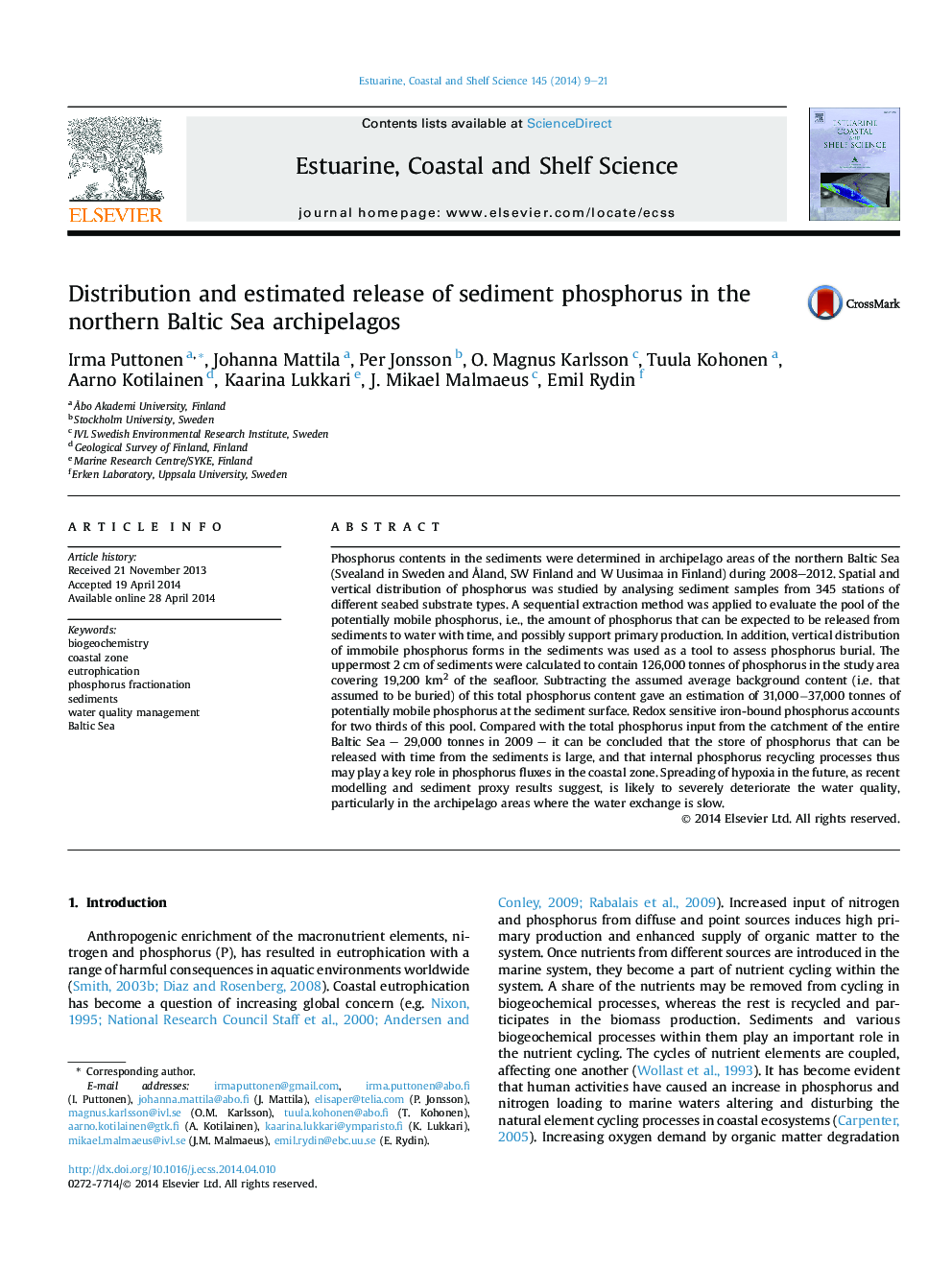| کد مقاله | کد نشریه | سال انتشار | مقاله انگلیسی | نسخه تمام متن |
|---|---|---|---|---|
| 4539681 | 1626651 | 2014 | 13 صفحه PDF | دانلود رایگان |
• A comprehensive study on sediment P in the N Baltic Sea archipelagos was conducted.
• High levels of phosphorus were found across the study area.
• Fractionation of potentially mobile P suggested a high potential for internal loading.
• Internal P loading can occur under particular conditions, especially hypoxia.
• Internal loading of phosphorus stimulates productivity of N2-fixing cyanobacteria.
Phosphorus contents in the sediments were determined in archipelago areas of the northern Baltic Sea (Svealand in Sweden and Åland, SW Finland and W Uusimaa in Finland) during 2008–2012. Spatial and vertical distribution of phosphorus was studied by analysing sediment samples from 345 stations of different seabed substrate types. A sequential extraction method was applied to evaluate the pool of the potentially mobile phosphorus, i.e., the amount of phosphorus that can be expected to be released from sediments to water with time, and possibly support primary production. In addition, vertical distribution of immobile phosphorus forms in the sediments was used as a tool to assess phosphorus burial. The uppermost 2 cm of sediments were calculated to contain 126,000 tonnes of phosphorus in the study area covering 19,200 km2 of the seafloor. Subtracting the assumed average background content (i.e. that assumed to be buried) of this total phosphorus content gave an estimation of 31,000−37,000 tonnes of potentially mobile phosphorus at the sediment surface. Redox sensitive iron-bound phosphorus accounts for two thirds of this pool. Compared with the total phosphorus input from the catchment of the entire Baltic Sea – 29,000 tonnes in 2009 – it can be concluded that the store of phosphorus that can be released with time from the sediments is large, and that internal phosphorus recycling processes thus may play a key role in phosphorus fluxes in the coastal zone. Spreading of hypoxia in the future, as recent modelling and sediment proxy results suggest, is likely to severely deteriorate the water quality, particularly in the archipelago areas where the water exchange is slow.
Figure optionsDownload high-quality image (295 K)Download as PowerPoint slide
Journal: Estuarine, Coastal and Shelf Science - Volume 145, 20 May 2014, Pages 9–21
